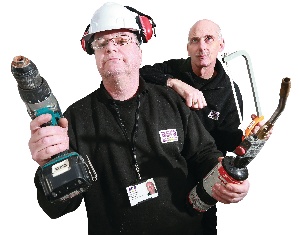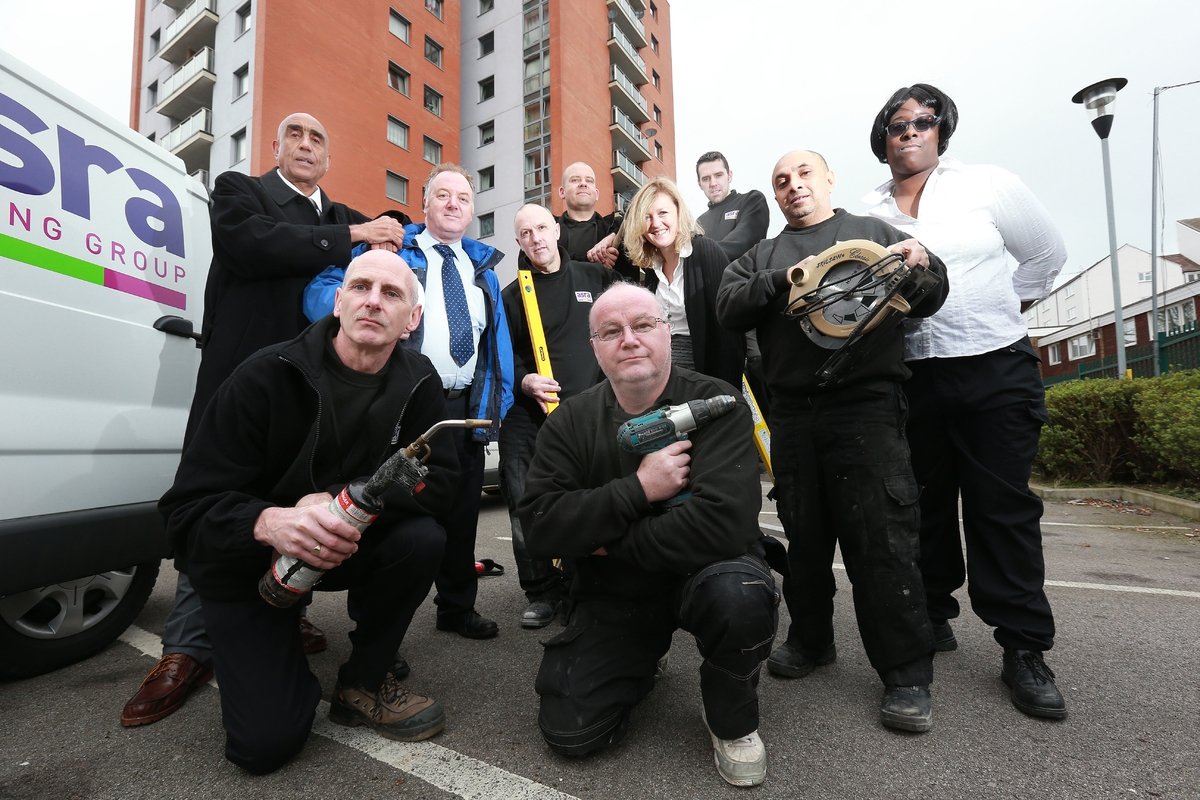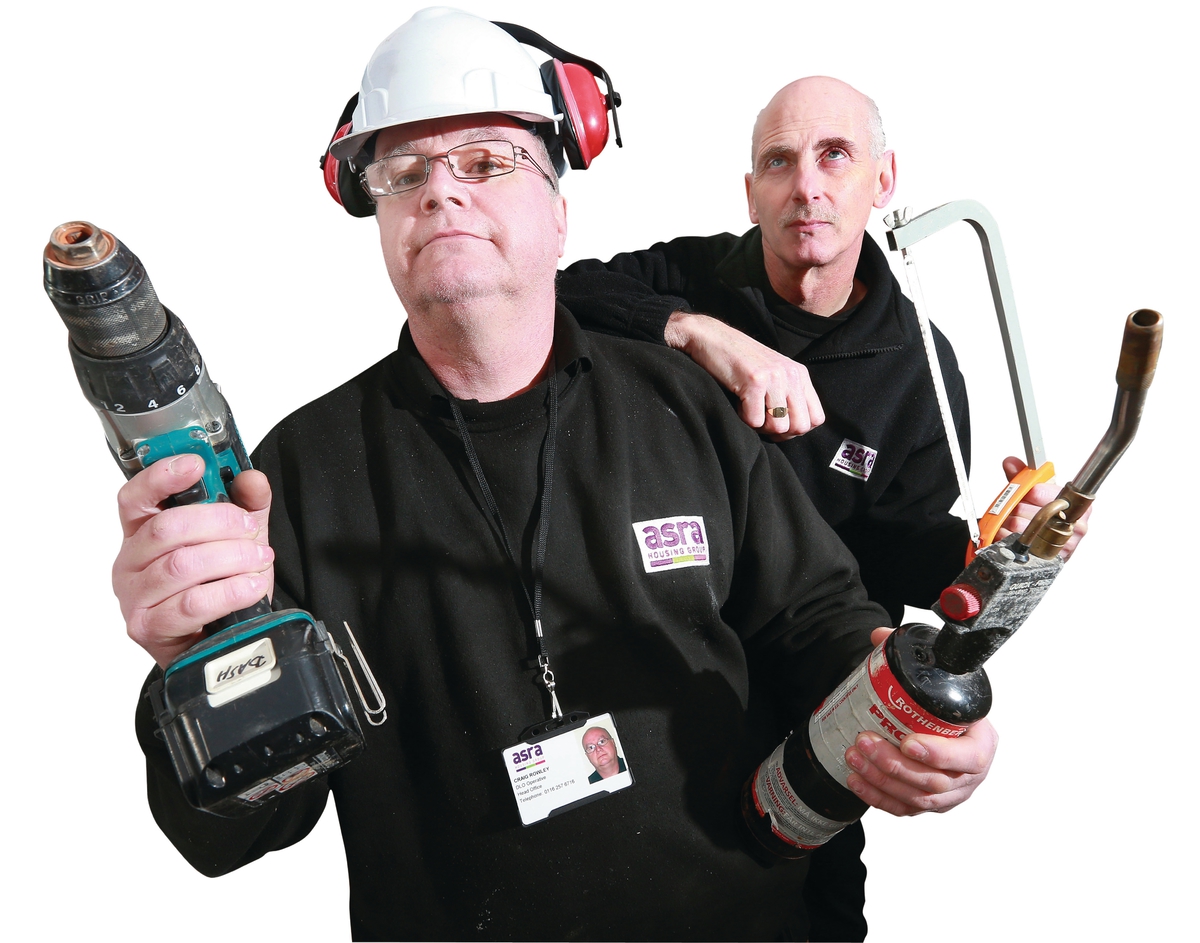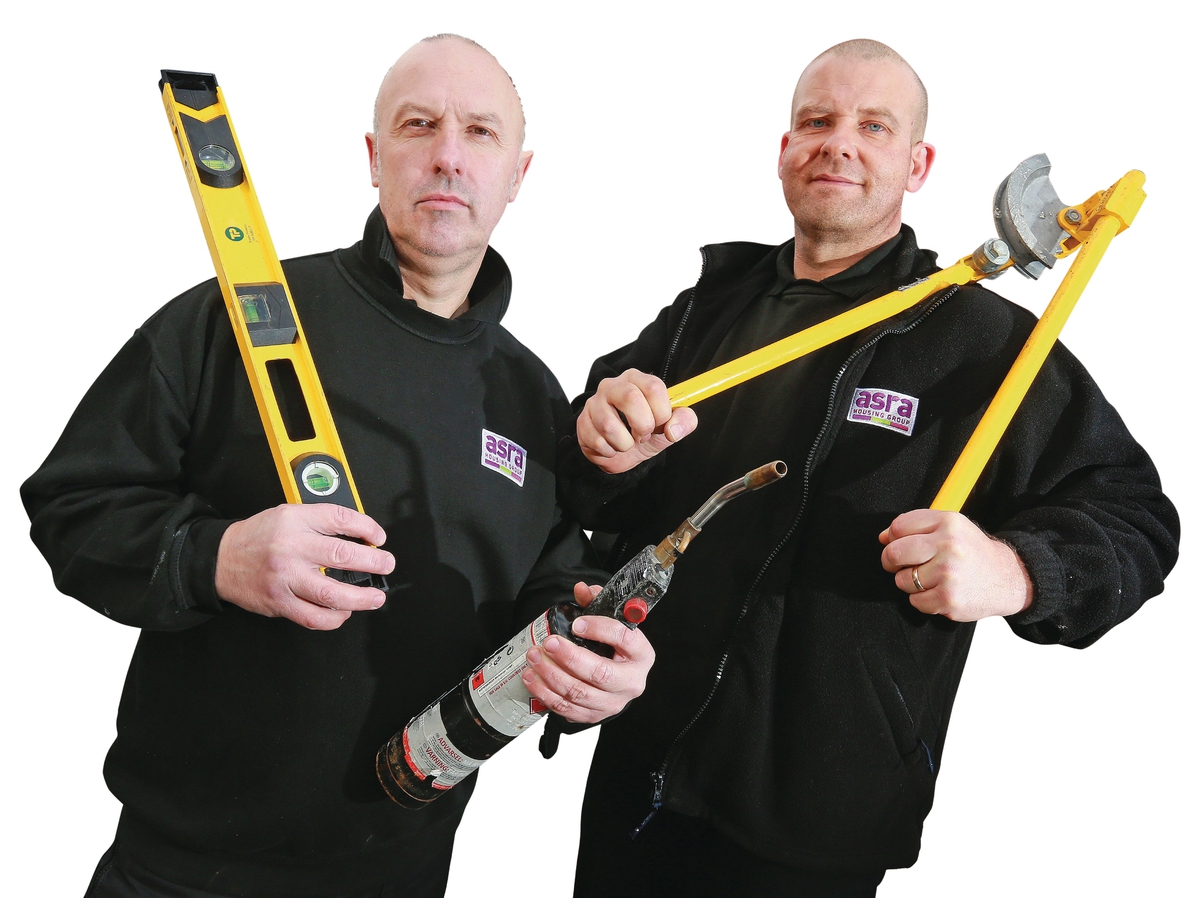Return of the DLO
The direct labour organisation is back and it means business. Lydia Stockdale finds out how bringing repairs and maintenance in-house is saving the day for some social landlords
They are a growing band of superheroes in the world of social housing repairs and maintenance. Up and down the country, carpenters, plumbers and electricians are combining their powers in order to deliver services in-house.
For many social landlords, the desire to manage their repairs and maintenance internally through a direct labour organisation, rather than outsourcing it to external contractors, has only recently emerged.
It used to be the case that most housing providers - especially stock-owning councils - had DLOs, but they fell out of favour due to widespread opinion that they often carried out poor-quality work. It was perceived that outside organisations offered a more professional service. But things have now changed.
For a variety of reasons many social landlords are deciding to reharness the power of delivering services direct to their tenants, without a middleman.
Over the past 12 to 18 months, between 30 and 40 housing providers across the UK have opted to manage at least some of their repairs and maintenance work themselves, according to the Housing Quality Network, which runs an accreditation service for DLOs.
So why has this happened? And are DLOs all they are cracked up to be when it comes to saving the day?
The ‘tipping point’ came at the beginning of 2011 when value added tax rose by 2.5 per cent to 20 per cent, meaning it cost more for housing associations to hire contractors, believes Kevin Bentley, lead asset management associate at HQN. By employing operatives through a DLO, they would avoid paying VAT on labour costs.
Reviews conducted by professional services firm KPMG show that labour typically accounts for between 60 and 70 per cent of the costs of running a repairs and maintenance service, so organisations with in-house teams are saving 20 per cent on this proportion of their outgoings. Those with in-house teams effectively save £5,000 for every operative paid an annual salary of £25,000.
However, Graham Coupar, managing director of Housing Asset Management Consultancy, who works with DLOs on their business and improvement plans, believes that while this tax saving is ‘worth having’, it is ‘not crucial in people’s decisions’.
Service standards
For many organisations, the decision to deliver repairs and maintenance services to their tenants directly was driven by the fact they experienced ‘very poor service from big national contractors that promised wonderful things at the time of tender and then consistently fail to deliver’, he explains.
What, though, is happening on the ground?
Asra Housing Group, which owns 13,000 homes located between Leicester and London, is one of the many organisations that has recently ventured into employing repairs and maintenance operatives directly for the first time. For John Arthurworrey, its group maintenance services manager, the decision was driven by a number of factors that all came together at the same time. ‘The conditions were right,’ he says.
Inside Housing travelled to Northampton to find out more about these conditions and to meet some of the 14 operatives in Asra’s DLO to ask how they find working for an in-house service.
At the moment, the DLO covers 1,200 of the housing association’s properties mainly in and around Northamptonshire. It is currently being piloted and Asra’s board will decide whether it will be a permanent fixture next month - but so far the signs look good.
The DLO started out last May with seven employees - the number has since doubled. It’s now doing out-of-hours work and has expanded the area for which it provides repairs and maintenance on void properties, it now operates in Leicester too.
Mr Arthurworrey admits that he and others at Asra ‘were apprehensive at the start because this is new to us’. Setting up the DLO was a big commitment, which would require an investment of around £470,000. There was a lot to organise, including procuring vehicles, insurance and equipment.
Some organisations with concerns about the scale of the undertaking have opted to form partnerships with contractors, or set up wholly-owned subsidiaries enabling them to employ operatives, while at the same time having access to external repairs and maintenance expertise.
The team at Asra considered such options, says Mr Arthurworrey, but various forces aligned and it became clear that a DLO was the way to go.
First of all, Asra got a new chief executive who came from arm’s-length management organisation Solihull Community Housing, which has a DLO. When Matt Cooney joined in April 2010, he was keen for his new organisation to manage at least some of its repairs and maintenance services directly because he had already seen the advantages first-hand.
Then, later that same year, Asra’s main contractor, Connaught, went into administration. ‘It left us in a huge mess,’ recalls Mr Arthurworrey. ‘They just folded overnight and we had 800 properties where we didn’t know what was happening.’
What tenants want
In the meantime, Phil Banks, a tenant representative who sits on the housing association’s operations board, was busy championing direct labour. ‘I thought we’d be better off with our own repairs team. I’d become increasingly frustrated with contractors [because they were not delivering a good enough service],’ he says.
Giving tenants the service they wanted was a big part of the decision not to hire a new contractor to cover responsive repairs in Northampton, states Sophie FitzHugh, service delivery manager at Asra.
‘We need to be able to show that we’re providing a better service in the areas they really care about. In all of the surveys we’ve ever carried out, the repairs service has been the main area of importance for our customers, and it’s also been the one about which we’ve had most complaints,’ she explains.
Since the DLO pilot has been running, the number of complaints received by Asra has fallen by around 87 per cent from 31 in 2011/12 to three so far in 2012/13. ‘The response we’re getting back from the tenants is very good; they’re well pleased,’ says Mr Banks.
While providing tenants with a better service was the main reason Asra decided to set up an in-house repairs and maintenance team, finances also played a part. ‘It is about customer satisfaction, of course it is, but it’s customer satisfaction within cost parameters,’ says Mr Arthurworrey. ‘We don’t pay VAT on labour - that reduces your costs. Also, we don’t have to make a profit.’
The cost of running the DLO is around £720,000 per year, around 15 per cent less than hiring external contractors to do the same job, calculates Mr Arthurworrey. Even though Asra’s costs are reduced, the quality of the fixtures and fittings installed into properties has risen and this will save more money in the long term, he says.
‘When we’ve hired contractors we’ve worked to a schedule of rates, so we’d go out to tender and everything would be priced per meter or per option - but it would be priced by the contractor using the very cheapest materials because otherwise they wouldn’t win the tender,’ he explains.
‘They would price the cheapest taps which would go past their warranty, but would probably then fail. If you install a really good-quality tap, it might last 60 or 80 years. The labour is just as difficult for a poor-quality tap as a quality tap. There’s an advantage of an external contractor not putting in a good tap, because two years later they have to put more in - so it creates its own industry.’
More flexibility
Overall, running the DLO is making Mr Arthurworrey’s life easier. ‘I’ve suddenly got control,’ he says.
‘Contractors were travelling a very long distance to carry out the repairs in Northamptonshire. The people weren’t employed locally. We don’t have enough properties in the area to make us a major player, so that meant if there was an emergency [such as heavy snow] they would tend to their major clients and not us.’
Now Asra’s workforce is more flexible - they will be there when disaster strikes.
Because of the general economic climate, hiring good, multi-skilled operatives directly was easier than it would have been before. ‘The climate changed with high unemployment. Suddenly you’ve got a lot of building workers out there who haven’t got jobs,’ he explains.
‘What we can offer now is locally-employed [operatives] who know the area and who want to invest in it.’
Mr Arthurworrey estimates that, on average, these multi-skilled operatives will visit properties twice a year. ‘They’re going to want to provide a good service and not have to go back to redo work. They care more because they’re accountable - before it was a sub-contracted person who may never go back to that property in their life.’
The operatives are also reporting any problems they’ve spotted while they’re out in people’s homes, adds Ms FitzHugh.
Consultant Mr Coupar confirms that organisations with direct labour often receive much more information about wider problems with their properties, such as common faults that need to be addressed, or the presence of vulnerable tenants. ‘They get feedback from operatives, perhaps about improper use of properties, such as sub-letting,’ he says. ‘There’s lots of added value.’
Before social landlords get carried away with the idea of setting up a DLO, there is a lot they need to consider - not least the skills required to run services themselves and the risks involved. ‘If you just assume that you can run a DLO because you’ve run a service managed by contractors, then you’ll find you’re mistaken,’ Mr Coupar states.
Chris Durkin, chief executive of Willmott Dixon Support Services, says housing providers ‘should not underestimate just how much outsourcing companies [like Willmott Dixon] need to invest to retain a competitive edge by equipping their teams with the latest technology and skillsets to achieve the stretching targets landlords require from an outsourced provider’.
‘This includes having the systems, processes and, just as important, maintaining a highly trained and motivated workforce,’ he adds.
Assessing the risks
To successfully run a DLO, there needs to be good management in place, there also needs to be a good remuneration scheme that incentivises operatives, says Mr Coupar. Deployment of labour is complicated, organisations need an IT system to manage this - then there are other considerations such as what happens if a worker injures themselves.
Setting up a DLO is potentially most difficult for ‘smaller, dispersed, specialised organisations that can’t get the economies of scale,’ he says. ‘Unless there is enough of a concentration of properties in one place, it’s hard to make it pay.’
The biggest risk of all is the money involved, setting up a DLO is expensive - ‘you have to be committed,’
Mr Coupar states. ‘The senior management team and the board have to be signed up to it.’
In Northamptonshire, running a DLO has ‘not all been plain sailing’, admits Ms FitzHugh. ‘All sorts of things have happened: we’ve had vans crashing, breaking down. We’ve had a couple of performance issues with engineers.’
‘This is a different type of business,’ adds Mr Arthurworrey. ‘It requires a different management style. Operatives are used to working on building sites - when there’s no work, they move somewhere else. The DLO is very different for them.’
Next month Asra’s board will decide the fate of its DLO. Ms FitzHugh expects the organisation to keep the in-house team and to adopt ‘a bit more of a mixed economy where we say “let’s have 50 per cent external contractors”.’
It looks as though the organisation’s superheroes are here to stay.

The electricians’ view
Craig Rowley (left) and Chris Barke (right) are both electricians in Asra’s direct labour organisation:
‘I started working here in October. My previous employer, a contractor called Newlife Regeneration Construction, went bust in August. It was 8.30am - I walked into work to be told there were no jobs,’ says Craig Rowley.
‘Working for a DLO is a different ball game. As a contractor you do what’s on the sheet in front of you. Working directly for a landlord means you go in and do what needs doing, rather than what you’re told to do.
‘It’s early days, but the feedback we’re getting is good.’
Chris Barke agrees that working for a DLO is a different experience. ‘When you’re working for a contractor, you’re always working to a budget. You don’t go over the budget, so you’re aware if you’re doing too much,’ he says.
That’s not the case working for a DLO.
‘Also, I’ve noticed that if you have a question, you phone your supervisor and get an answer straight away - when working for a contractor you’d have to wait for them to go away and call you back.’

The plumbers’ view
Martin Wyatt (right) and Stephen Lawton (left) are both plumbers in Asra’s direct labour organisation:
‘I previously worked for a contractor that did stuff for housing associations,’ says Martin Wyatt. ‘Working for a DLO, I’ve noticed that the relationship between the housing association and the staff is an easier one - you’re left to get the job done.
‘Some of the customers are surprised that we do more than what is on the ticket. We always ask if there’s anything else we can do while we’re there, like fixing a tap or a toilet seat. This saves time and faffing around later on.’
The best of both worlds?
Not every organisation wants to go down the direct labour organisation route. United Welsh, which owns and manages 4,700 homes in south Wales is due to start running its repairs and maintenance services through its wholly-owned subsidiary Celtic Horizons in April.
‘We’ve entered into a partnership with Mears. They will deliver our asset management services for us using Celtic Horizons as the delivery vehicle,’ explains Lynda Sagona, director of housing and communities at the association.
The contract with Mears has a total potential value of £145 million over 15 years, which includes the cost of employing staff through the subsidiary.
There will be a team of around 75 people, with 20 employees being transferred from United Welsh. The senior delivery manager will be a direct employee of Celtic Horizons and will report to a partnership director employed by Mears.
‘The reason why the wholly-owned subsidiary model was attractive was that, while it brings a lot of the benefits of the DLO - it brings the team of people working on asset management services together and gives them the chance to have a really close, cohesive team - but it also allows us to partner with an organisation which is much closer to best practice,’ explains Ms Sagona. ‘We felt more confident partnering with experts in the field.’
‘It’s also about identifying the risk - we can share risk with a partner. What was agreed with the staff and tenant groups was that the wholly-owned subsidiary model most closely aligns itself to the objectives we were hoping to satisfy: improving the customer journey and reducing delivery time.’
Alan Long, executive director of Mears, says that this is just one way in which social landlords can partner with the contractor.
In Essex, for example, Mears has partnered with Epping Forest Council in a different way. ‘We’ve been acting as a managing agent,’ he explains. ‘Whatever angle you are coming from as a landlord there is a model that will allow you to bring in some external expertise.’











